Samsung Galaxy Tab 10.1 Review: The Sleekest Honeycomb Tablet
by Anand Lal Shimpi on June 13, 2011 5:07 AM EST- Posted in
- Tablets
- Samsung
- Tegra 2
- Galaxy tab 10.1
- Android 3.1
- Mobile
- NVIDIA
The Software
At CTIA Samsung mildly shocked the world by proclaiming that it would be bringing TouchWiz to its first Honeycomb tablet. Google had previously indicated that Honeycomb's UI would be unified and that hardware vendors wouldn't be skinning it, however it later backed off and said that Honeycomb was simply going to be good enough that no one would want to change it.
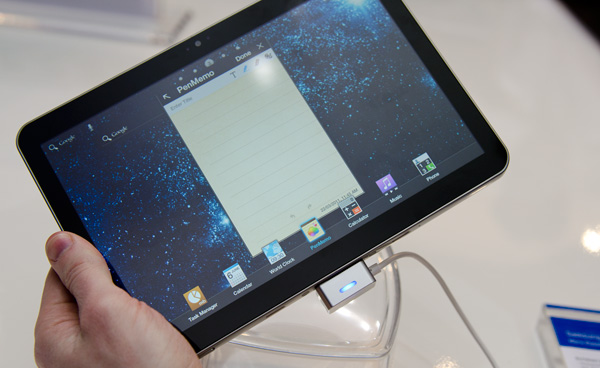
TouchWiz was originally slated to be a part of the Galaxy Tab 10.1 launch
The shipping version of the Galaxy Tab 10.1 (as well as the Limited Edition given out at Google IO) has all hints of the Honeycomb TouchWiz UI removed. There aren't even any Samsung specific widgets that come preloaded on the Galaxy Tab. I'm not sure if Google got tough with Samsung or if Samsung gave up on the idea of skinning Honeycomb after the 3.1 enhancements, but for better or for worse TouchWiz is gone.
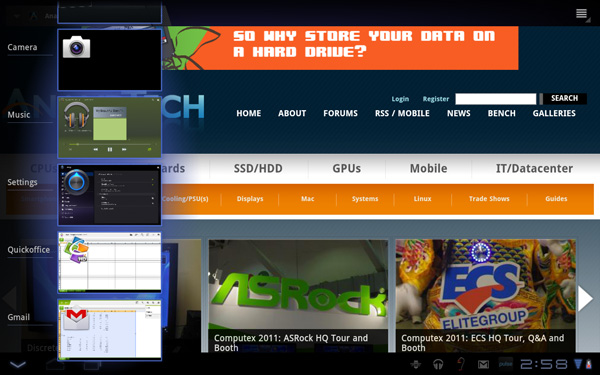
A scrollable recent apps list, a new feature of Android 3.1
One of the big features of TouchWiz on Honeycomb was supposed to be the ability to resize widgets, a feature that Google actually added in with the 3.1 update last month. The Galaxy Tab 10.1 ships with 3.1 from the factory bringing the total number of 3.1 devices up to three in the market today (ASUS' Eee Pad, Motorola Xoom and Samsung Galaxy Tab 10.1). Both the performance and feature enhancements that came along with the 3.1 update apply to the Galaxy Tab 10.1 so I won't go through them again here. If you weren't sold on Honeycomb before the update, the 3.1 bundle isn't going to be enough to make you a convert - but if you were interested in the OS beforehand, the point release makes the experience noticeably better.
Samsung opted for a more conservative default wallpaper on the 10.1 than ASUS did with the Eee Pad. It's impressive how much of an impact an animated wallpaper can have on performance. Samsung's simple switch makes the Galaxy Tab feel snappier by default. We're still a generation or two away from being able to have enough spare CPU cycles and memory bandwidth to throw away at things like frivolous UI elements.
There are still some odd hiccups that bother me about Honeycomb. For example, frame rate when bringing up the apps grid is still lower in portrait mode than in landscape. I also encounter far too many crashes on a regular basis. I still believe Honeycomb is fit for sale but it's definitely not a fully polished product.
While overall UI performance is much improved with 3.1 vs 3.0.1, it's still not perfectly smooth. For doing the handful of things that tablets work very well at Honeycomb definitely gets the job done, but ask too much of it and the experience quickly breaks down into something a lot slower.
Web browsing is still mostly pleasant. While Flash support is there, Honeycomb on a Tegra 2 is still far too sluggish to deliver even a netbook like experience. The problem ultimately boils down to screen resolution and memory bandwidth. At 1280 x 800 there are simply too many pixels to run most moderately complex Flash video while maintaining any semblance of a smooth UI.
Apps
With TouchWiz gone, there's still Samsung's own set of preloaded apps that come with the Galaxy Tab 10.1.
The Music Hub is Samsung's music store powered by 7digital. Tracks sell for between $0.99 and $1.49.
This next one is a bit odd. If you've purchased any Samsung device in the past (e.g. Samsung TV) you'll know the company is particularly fond of outfitting its hardware with its own custom app store. The Galaxy Tab 10.1 is not exempt from this treatment. The tablet comes with an app called Samsung Apps, which is a separate app store that presently has a whopping 6 titles, three of which are Angry Birds variants (Regular, Rio and Seasons). Thankfully all of the titles available in Samsung Apps, at least today, are all available free of charge.
Although the titles are free they are ad supported. Note that the apps themselves aren't delivered through Market so you'll need to enable the installation of non-market apps in order to actually use any of them.
Quickoffice is a basic word processing, spreadsheet and presentation package for Android with some basic MS Office compatibility. ASUS opted for Polaris on the Eee Pad but Quickoffice seems to work just as well.
The suite has some nice features such as one-touch text-to-speech when reading a Word document. We're not quite at the point where a Honeycomb tablet could replace a netbook but we're getting there.
Other than formatting issues, the biggest problem I had with Quickoffice was simply performance. Try to do too much (or forget about an app running in the background) and you're left with an app that just sits there waiting for a slice of CPU time that it seems to only get after decades (in CPU time) of waiting.
Samsung also includes Pulse newsreader (a magazine style RSS reader for tablets):
There's Android Movie Studio for basic video editing, primarily for video shot with the 10.1's cameras:
The performance complaints I mentioned above apply here to AMS as well. I had this app crash a good three times in succession while trying to edit together a simple video of footage I shot with the Galaxy Tab.
Of course there are the usual Android apps that we've covered as a part of Honeycomb (Gmail, Gtalk, Maps, Browser, etc...).
The Google supplied Honeycomb virtual keyboard is there however Samsung opts to use its own custom keyboard by default. I didn't have many complaints about Samsung's keyboard however I'm not a fan of the XT9 predictive text system Samsung's keyboard uses. I prefer the looks of the Samsung keyboard but the functionality of the stock Honeycomb offering.


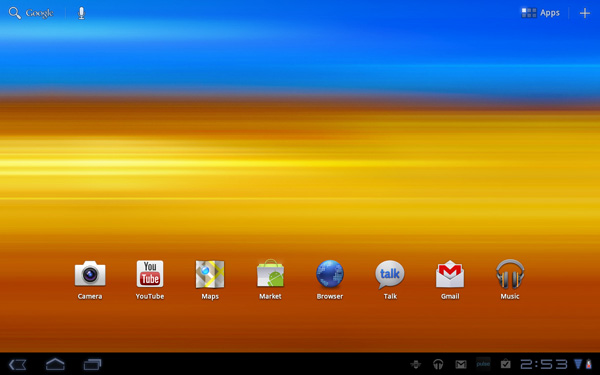
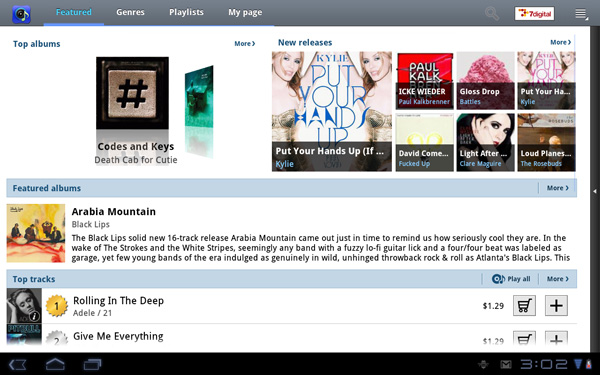
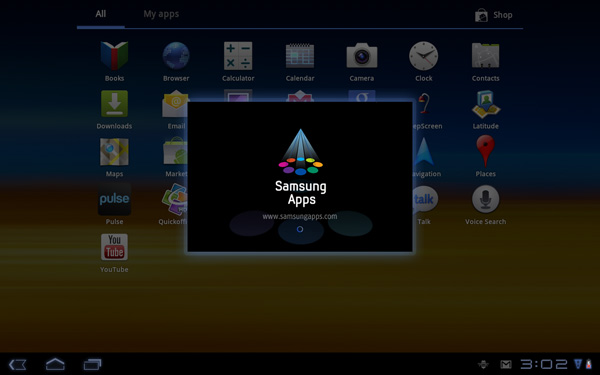
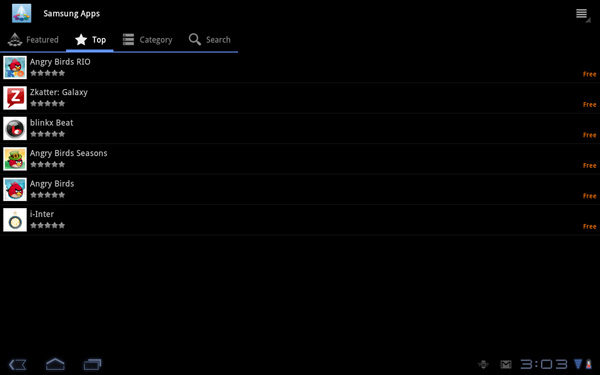
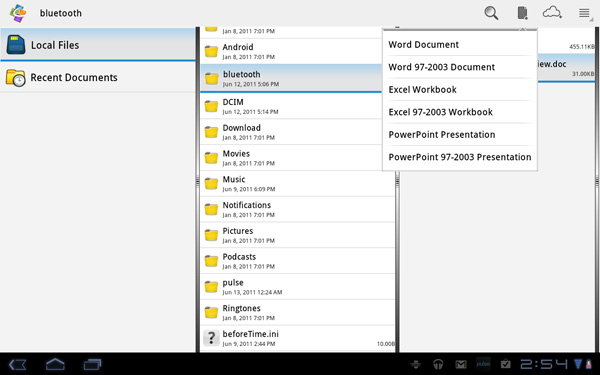
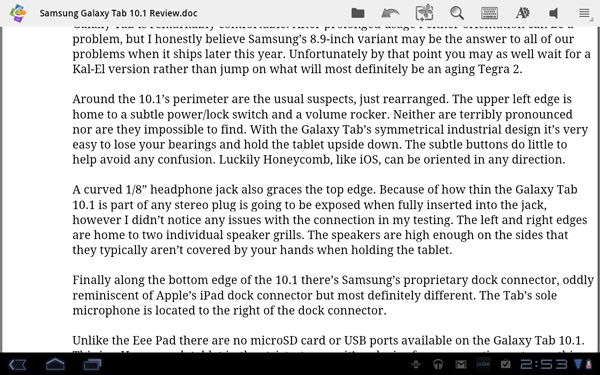
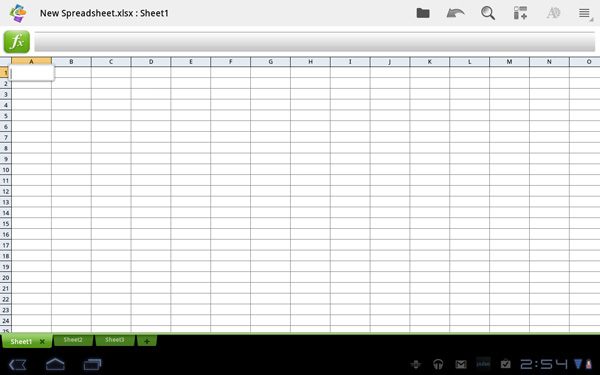
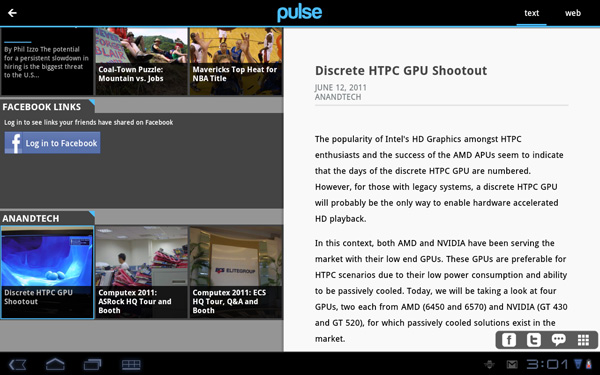

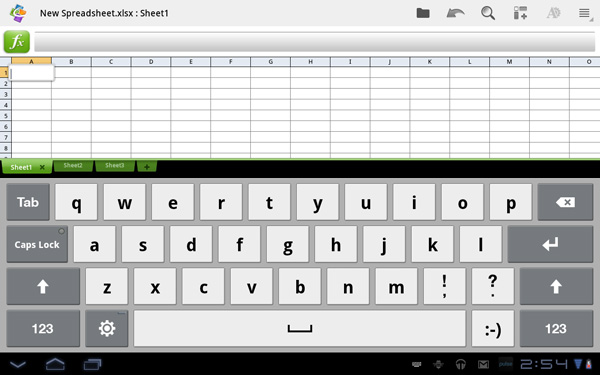








108 Comments
View All Comments
Rick83 - Monday, June 13, 2011 - link
At least slowly those prices are coming down. I was ridiculous when these things where introduced at laptop-prices instead of netbook-prices.With IPS screens, they're slowly coming into a reasonable price point.
I'm waiting for the next Archos announcement though, especially because I am looking to replace a pocketable/portable tablet and not one of these living room ornaments.
solipsism - Monday, June 13, 2011 - link
"The Galaxy Tab 10.1 measures just 8.6mm thick, [0.2mm] thinner than the iPad 2."robco - Monday, June 13, 2011 - link
I still can't really find a use for a tablet at this point, but this one looks nice. My primary concern would be if the app gap has narrowed since the Xoom was released. Also it doesn't appear that any other manufacturer's have had Apple's success in decoupling the 3G/4G versions from service contracts (without paying a lot more). It also appears that there's lots of optimization to be done. My other concern would be regarding Samsung's history when it comes to OS updates. I would hope owners won't be waiting too long to receive them.Still it's good to see competition for the iPad shaping up. I think Honeycomb makes better use of available screen real estate than iOS does. The different hardware options are nice. But I'm more old school I guess. I would still rather have a netbook or MBA. I like having a real keyboard and touchpad.
JasonInofuentes - Monday, June 13, 2011 - link
By all accounts, frustratingly, while the number of Honeycomb apps is climbing, there's a quality gap that's more important than the quantity gap. Android staples (TweetDeck, notably) is not Honeycomb optimized and to great detriment. Watching I/O this year they made it clear that the tools are their to create great apps for the platform but developers have a challenge though in developing for two Android platforms (Gingerbread and Honeycomb), maintaining and updating those releases, and still preparing to bring their Honeycomb app to the Ice Cream Sandwich framework when it's released. I would love to hear from developers why there wasn't this sort of growing pains when Apple extended iOS to the tablet form factor. What made it so easy to turn the phone app to the tablet app? What isn't there in the Android platform?@tnofuentes
Conner_36 - Monday, June 13, 2011 - link
I would guess it has to do with the SDK Apple has. While I have not actually coded an iOS app yet, playing around in Xcode made it seem like a simple check box was pretty much the difference between an iphone or ipad app.All you need to do is mess around Interface Builder for a few minutes and everything you had for the iphone can be retooled for the ipad (provided that you used Apple APIs and don't have too many custom views).
Apple has been building and rebuilding their tools and APIs for 30 years where as Google just started.
Does that make sense to anyone?
vision33r - Monday, June 13, 2011 - link
Your comparing a company(Apple) with decades of software experience to an advertising search company. Guess who makes better software?Android wasn't even grown in house and had to be bought by Google and then for Honeycomb, Google had to introduce their own C oriented language to get away from the nasty Java apps.
Whoever thought that Java apps on a phone was a good idea back then definitely was not forward thinking and this is the reason why Android apps suck so much vs iOS apps.
Google has a lot to copy from Apple. They copied the same touch interface and general multitouch UI, they got to copy Apple's music player, and even borrowed Apple's Webkit to make Chrome.
When you look at all this then you realize that Android is a copy and hack job while other OSes like WebOS, iOS, and even WP7 performs better.
Penti - Monday, June 13, 2011 - link
You do realize that it's Nokia that made the first Webkit browser for mobile platforms right? Before Apple announced and open sourced the Webkit engine they worked porting KHTML/WebCore and KJS/JavaScriptCore to S60. So just weeks after Apple open sourced it they had a Webkit-build out. WebCore and JavaScriptCore was never closed, as they where based on GPL projects, and Google uses their own Javascript-engine in Android. Not Nitro or JavaScriptCore. Webkit truly is a collaborative effort, not some magic gift from Apple developers. For that matter the underpinnings in OS X and iOS is Mach/BSD from Carnegie Mellon University and Berkeley, much of the environment and stuff that made it successful also comes from it's NeXT days such as the heritage of the Cocoa environment, Obj-C and fat binaries which NeXT ran on four platforms in 1993. GCC was the compiler back in 1989 too.Go and troll somewhere else.
Jamestownsend - Tuesday, June 14, 2011 - link
Actually, Android's javascript engine is based on apple's work on webkit. No one cares about what Nokia did...and indeed, android is the vista of mobile platforms without the large app support. Video wallpapers, widgets, etc...and a huge resource hog...it isn't trolling to state the facts...Penti - Wednesday, June 15, 2011 - link
Actually V8 was JIT before Nitro/JSC JIT branch and JIT from the start and developed the same time based on their own design and architecture. Based on Smalltalk and PCRE. So I don't know what your smoking. Not only that, it's simply not built entirely on JavaScriptCore or Apples sources since it's BSD. They do indeed have their own assembler, compiler, garbage collector and therefor their own Javascript JIT engine.Apple does contribute but not from some black hole and they do build on Open Source and other peoples work, just as they should, but you can't credit one company for it all.
You might not care, but it's thanks to Nokia, others and them cooperating in the project you can have a decent Safaribrowser to begin with. It wouldn't been optimized for embedded/mobile platforms otherwise. Ensuring it to Apple that it can be done well. Mozilla (Gecko) on the other hand has done a lot worse on the ARM-platform. Android has had native apps for a long while, since 1.5 publically and it's not because of Dalvik or the Android/Apache Harmoney class libs they had many of their performance problems. There is nothing magical on the C side that has happened with 3.0+. It is trolling when you troll about your incorrect or made up facts.
koss - Monday, June 13, 2011 - link
Hey Anand, why are all the dimensions of the three devices (Samsung, Moto and Asus) in mm and the Ipad is in inches? I mean it's not very difficult to convert, but its a pain - open another tab, etc, etc. Would you be kind enough to convert everything in the graph in the same units, regardless inches or cm? Thanks.PS: Keep it up - one of my fav. sites ;)